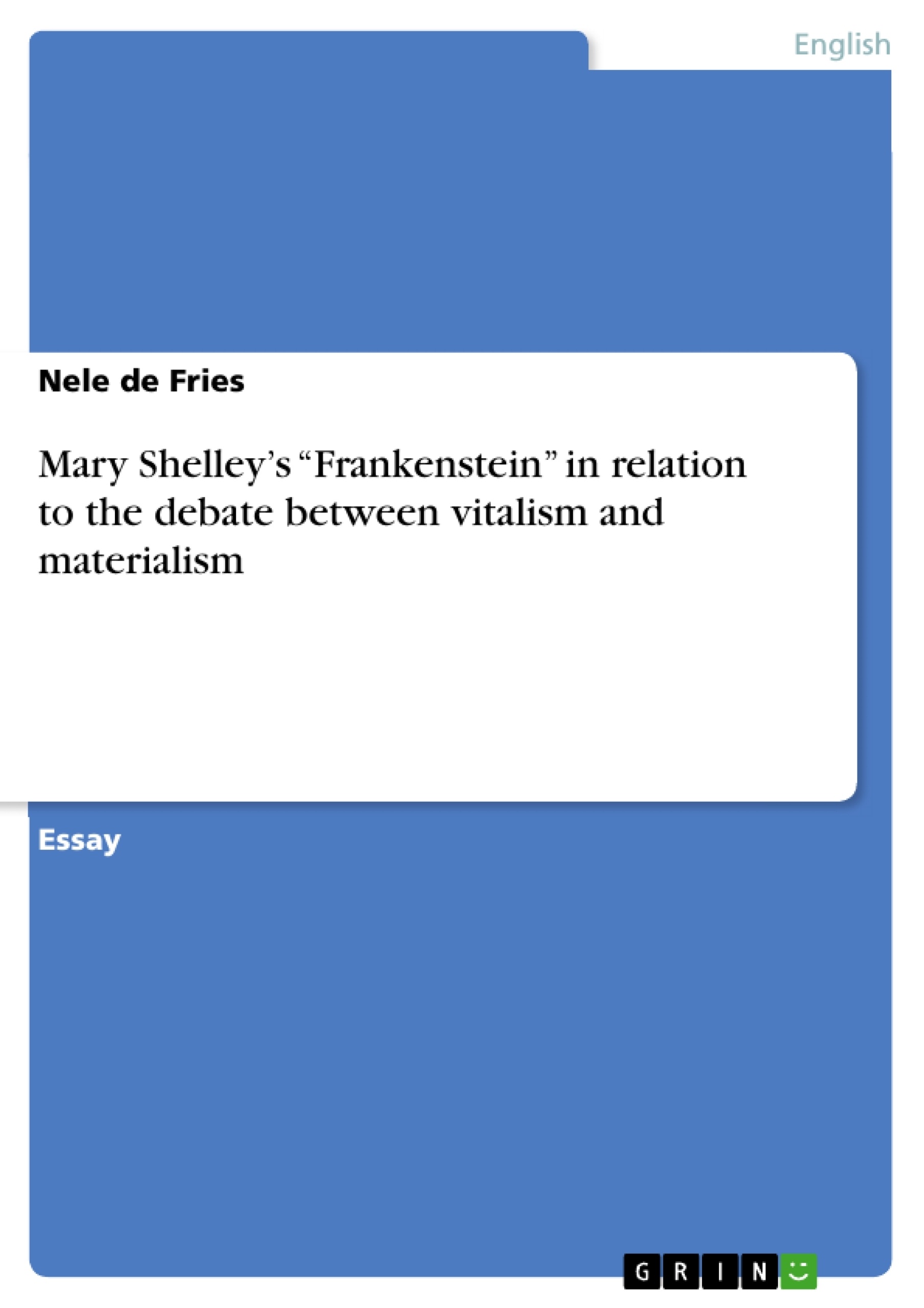This essay deals with Mary Shelley’s "Frankenstein", written in 1818. In this time a highly controversial discussion started about living entities containing a kind of vital spirit or not and how it is related to electricity and chemistry. The two main positions are on the one hand the vitalists and on the other the materialists. Vitalism consists of the supposition that every living source owns a vital force which brings life into them. It is supposed that a soul was infused into the body by a power like God via electricity and the fact that they contain this sort of energy makes them different from non- living entities.
Inhaltsverzeichnis (Table of Contents)
- Introduction
- Vitalism and Materialism
- Vitalism
- Materialism
- The Origin of Frankenstein
- The Protagonist and His Creation
- The Monster's Quest for a Companion
- Revenge and the End of the Story
- Interpreting Frankenstein
- Frankenstein's Monster: A Vitalist Argument
- The Role of Electricity
- Materialist Arguments in Frankenstein
Zielsetzung und Themenschwerpunkte (Objectives and Key Themes)
This essay analyzes Mary Shelley's Frankenstein, exploring how the novel reflects the 19th-century debate between vitalism and materialism, ultimately arguing for the prevalence of vitalist themes within the narrative.
- The intersection of science, religion, and the concept of life
- The nature of humanity and the pursuit of knowledge
- The power of creation and the responsibility of the creator
- The search for identity and belonging
- The consequences of isolation and the nature of revenge
Zusammenfassung der Kapitel (Chapter Summaries)
- Introduction: Introduces the historical context of Frankenstein, highlighting the scientific debates surrounding vitalism and materialism.
- Vitalism and Materialism: Explains the core tenets of both vitalism and materialism, emphasizing their opposing views on the nature of life and the existence of a vital force.
- The Origin of Frankenstein: Discusses Mary Shelley's personal experiences and influences that led to the creation of the novel, emphasizing the impact of her encounter with key figures in the scientific debate.
- The Protagonist and His Creation: Introduces Victor Frankenstein, the protagonist, and his ambition to unlock the secrets of life, focusing on his creation of the monster and the horror he experiences.
- The Monster's Quest for a Companion: Describes the monster's loneliness and his desperate plea for a companion, emphasizing his desire for acceptance and the challenges he faces due to his appearance.
- Revenge and the End of the Story: Explores the consequences of Victor's actions and the monster's escalating rage, leading to a series of tragic events and the eventual deaths of both creator and creature.
Schlüsselwörter (Keywords)
The key terms and concepts explored in this essay include: vitalism, materialism, life force, creation, responsibility, identity, isolation, revenge, Frankenstein, monster, electricity, reanimation, scientific debate, literary interpretation, and the philosophical implications of Mary Shelley's work.
- Quote paper
- Nele de Fries (Author), 2016, Mary Shelley’s “Frankenstein” in relation to the debate between vitalism and materialism, Munich, GRIN Verlag, https://www.grin.com/document/347126




